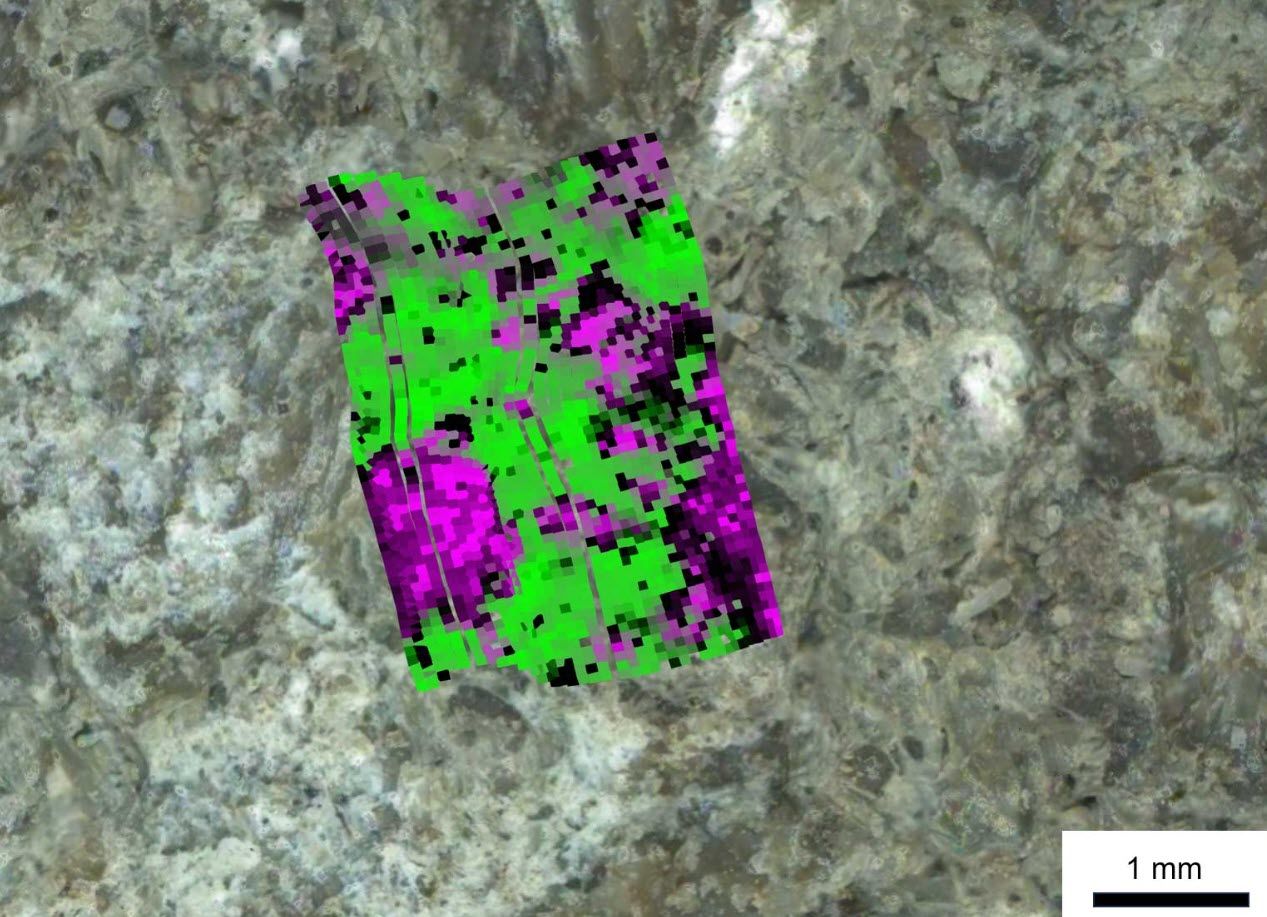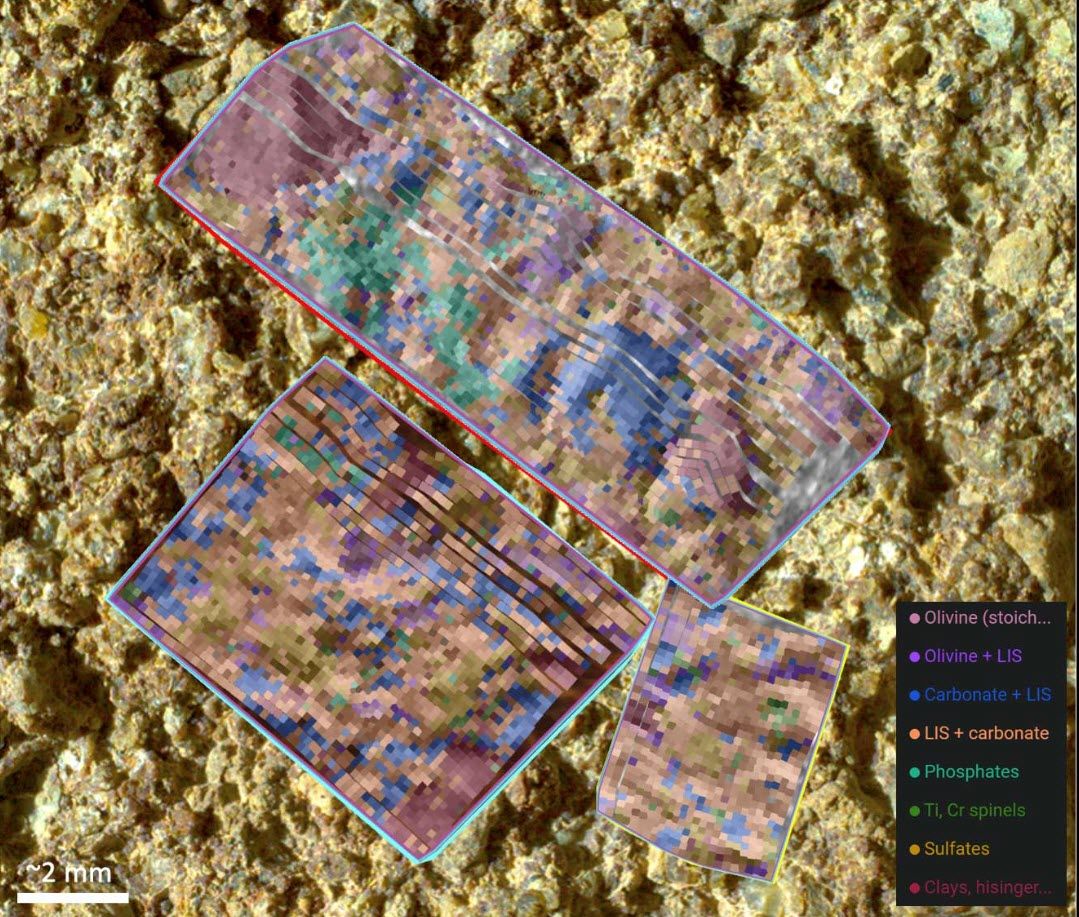After 1,000 days on Mars, NASA’s Perseverance rover has traveled on its mission through an ancient system of rivers and lakes, collecting valuable samples along the way.
Reaching its 1,000th Martian day on the Red Planet, NASA’s Perseverance rover recently completed its exploration of an ancient river delta that contains evidence of a lake that occupied Jezero Crater billions of years ago. The six-wheeled scientist has so far collected a total of 23 samples, revealing in the process the geological history of this region of Mars.
A sample called “Lefroy Bay” contains a large amount of fine-grained silica, a substance known to preserve ancient fossils on Earth. Another type called pico otis contains a large amount of phosphate, and is often associated with life as we know it. Both samples are also rich in carbonates, capable of preserving a record of environmental conditions since the rock’s formation.
The results were shared on Tuesday, December 12, at the fall meeting of the American Geophysical Union in San Francisco.
“We chose Jezero Crater as a landing site because orbital images showed a delta — clear evidence that a large lake once occupied the crater,” said Perseverance project scientist Ken Farley of the California Institute of Technology. “It is a wonderful environment for preserving signs of ancient life such as fossils in the geological record.” “After detailed exploration, we were able to reconstruct the geological history of the crater, mapping the lake and river stages from beginning to end.”
Jezero was formed by an asteroid impact approximately 4 billion years ago. After the vehicle landed in February 2021, the mission team discovered that the floor of the crater was composed of igneous rocks formed from magma underground or from volcanic activity on the surface. Since then, they have found sandstone and mudstone, indicating the first river reached the crater hundreds of millions of years later. Above these rocks there are mudstones rich in salts, indicating the presence of a shallow lake that was subject to evaporation. The team believes the lake eventually reached a diameter of up to 35 kilometers and a depth of 30 metres.
This concept animation by an artist depicts water breaching the rim of Jezero Crater on Mars, which NASA’s Perseverance rover is currently exploring. Water entered the crater billions of years ago, forming a lake, delta, and rivers before the red planet dried up.
Later, fast-flowing water brought rocks from outside Jezero, distributing them across the top of the delta and elsewhere in the crater.
“We were able to see the broad outlines of these chapters in Jezero’s history in orbital images, but it took getting closer to Perseverance to understand the timeline in detail,” said Libby Ives, a postdoctoral researcher at the Space Propulsion Laboratory. An aircraft in Southern California, which manages the mission.
The samples collected by Perseverance are roughly the size of a piece of classroom chalk and are stored in special metal tubes as part of the Mars Sample Return campaign, a joint effort between NASA and the European Space Agency (ESA). Bringing the tubes to Earth would allow scientists to study samples using laboratory equipment too powerful to be transported to Mars.
To determine which samples to collect, Perseverance first uses a scraping tool to scrape off an area of potential rock and then studies the chemistry of the rocks using precision science instruments, including the Planetary Instrument for X-ray Lithochemistry (PIXL), designed by JPL.
In a target the team called Bells Bay, PIXL detected carbonates — minerals that form in aquatic environments with conditions suitable for preserving organic molecules. (Organic molecules are formed through geological and biological processes.) These rocks were also abundant in silica, an excellent material for preserving organic molecules, including those associated with life.
“On Earth, this fine-grained silica is what you often find in a place that was previously sandy,” said Morgan Keeble of JPL, deputy principal investigator at PIXL. “It’s the kind of environment in which remnants of ancient life on Earth can be preserved and later found.”
Perseverance’s instruments are able to detect microscopic, fossil-like structures and chemical changes that may have been left behind by ancient microbes, but it has yet to find evidence of either.
In another target examined by PIXL, called “Cachoeiras Ouzel,” the device detected the presence of iron bound to phosphate. Phosphate is a component of the DNA and cell membranes of all known terrestrial life forms and is part of a molecule that helps cells transfer energy.
After evaluating the PIXL results at each of these erosion points, the team sent commands to the rover to collect nearby rock cores: Lefroy Bay was collected next to Bills Bay and Otis Peak at Ouzel Falls.
“We have ideal conditions to find signs of ancient life as we find carbonates and phosphates, which indicate a habitable aquatic environment, as well as silica, which is great for preservation,” Keeble said.
The work of perseverance, of course, is far from over. The mission’s fourth ongoing science expedition will explore the rim of Jezero Crater, near the mouth of the canyon where a river flooded the crater floor. Carbonate-rich deposits have been spotted along the beach, which stand out in orbital images like a ring inside a bathtub.
One of the main goals of the Perseverance Mars mission is astrobiology, including the search for signs of ancient microbial life. The rover will describe the planet’s geology and past climate, pave the way for human exploration of the Red Planet, and will be the first mission to collect and store Martian rocks and regolith.
Subsequent NASA missions, in cooperation with the European Space Agency (ESA), will send spacecraft to Mars to collect these sealed surface samples and bring them to Earth for more detailed analysis.
The Perseverance Mars 2020 mission is part of NASA’s Moon to Mars exploration approach, which includes Artemis missions to the Moon that will help prepare for human exploration of the Red Planet.
The Jet Propulsion Laboratory, run by the California Institute of Technology in Pasadena, California, built and operates the Perseverance rover.
For more information about Perseverance: mars.nasa.gov/mars2020/
source:
https://www.jpl.nasa.gov/news/nasas-perseverance-rover-deciphers-ancient-history-of-martian-lake

“Coffee trailblazer. Social media ninja. Unapologetic web guru. Friendly music fan. Alcohol fanatic.”




